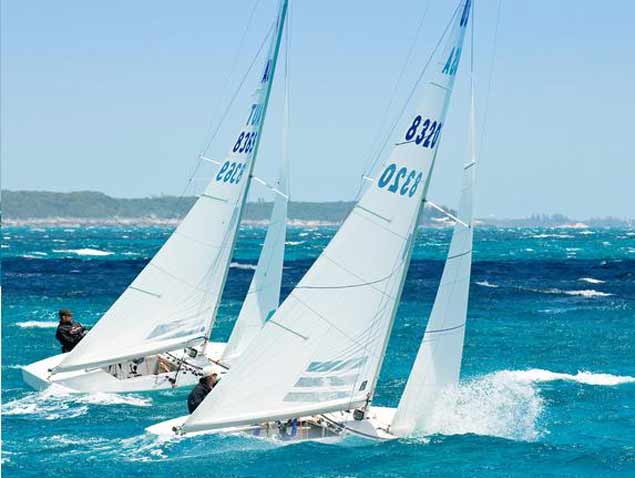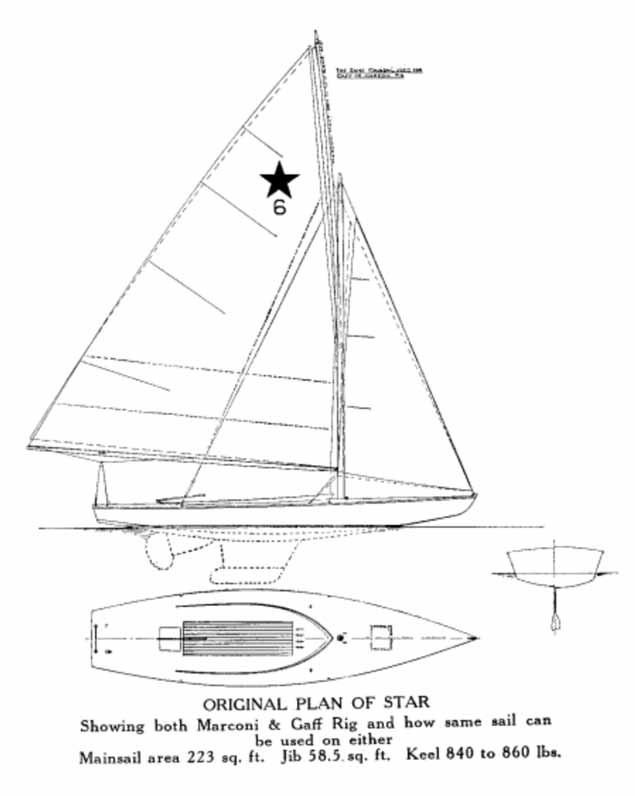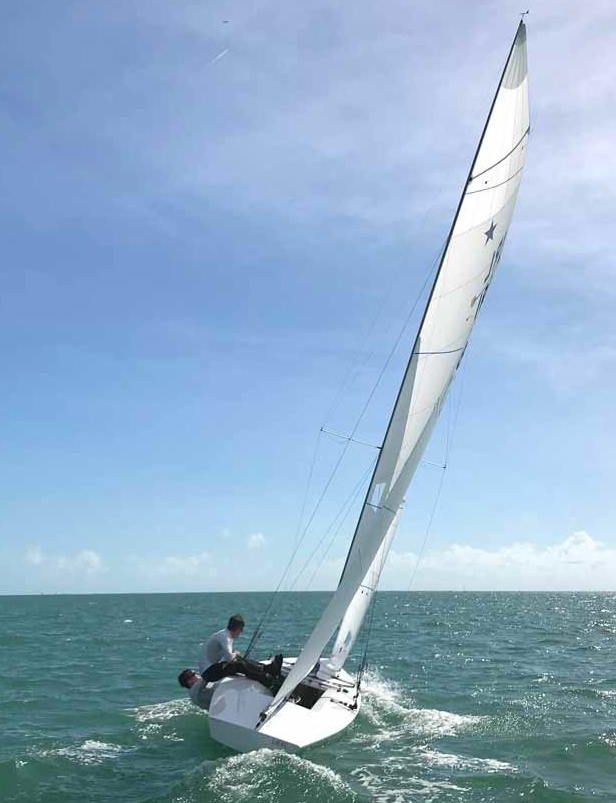Usually when a boat fills a very special niche in the world sailing scene, the standard response is that if it didn’t exist, then somebody would just have to invent it writes W M Nixon. But in the case of the International Star, it’s beyond imagination to think of anyone coming up with such a thing, even in their wildest dreams.
And if you told a complete stranger to sailing the story of how this boat continues to be at the cutting edge of sailing competition despite being based on a hull design of 1910, they’d reckon you were making it up at the very least, and were more likely to be just plain daft.
Yet for a remarkable cohort of top international sailors, the reckoning is that if you can sail a Star with success, then you can be competitive in almost any other kind of boat. And equally, if you’re a sailor who has won his colours in a variety of other craft, then when you go out in a top Star fleet you’ll find yourself afloat with legends from many other areas of sailing.
All of which means that some really good sailors who were disappointed when the International Star ceased to be an Olympic Class in 2012 reckon that there are very valid arguments for its restoration to the Olympic pantheon. Yet whether that happens or not, the class thrives, and last week’s victory by Ireland’s Peter and Robert O’Leary in their new German-built boat Dafnie in the Walker Cup in Miami - when they gave a textbook demonstration of how to put a series together - has renewed Irish interest.
 The International Star is at her best in a good breeze and sunshine, racing in warm water…
The International Star is at her best in a good breeze and sunshine, racing in warm water…
 ……but they can cope with less benevolent conditions too.
……but they can cope with less benevolent conditions too.
They won by sheer consistency, 14 points clear ahead of Paul Cayard. Now there’s a name to conjure with…….yet the Cork brothers beat him and several other names of renown without taking even one bullet. And every image which has emerged from the series shows yet again why the Star continues to fascinate a wide variety of sailors such as Cork’s Mark Mansfield and Dun Laoghaire’s David O’Brien, who took the Bronze at the Star Worlds in Annapolis in 2000.
The Star was already 21 years old when it became an Olympic class in 1932. The origins were in an inexpensive 18-footer called the Bug, designed in 1907 for use in the west part of Long Island Sound by noted naval architect William Gardner. With an ultra-cheap hard chine hull, it was reckoned after a season or two that the Bug was about five feet too short to be sailed with any comfort by two adults, so in 1910 a 23ft version was requested.
At the time William Gardner himself was bit busy designing yachts like the enormous record-breaking schooner Atlantic (her replica was in Dun Laoghaire last summer), so he asked his draftsman Francis Sweisguth to draw up an 23ft version of the Bug, and that was racing as a class in Long Island Sound by 1911, and given the rather more appealing name of the Star.
 The Star Class original plans of 1911
The Star Class original plans of 1911
 The Star today
The Star today
While the hull materials may have changed over the years until nowadays building a Star is a matter of enormous skill in advanced plastics with weights being calculated in milligrams, the basic hull lines are still exactly as drawn by Sweisguth in late 1910. It’s not a planing hull in the Uffa Fox sense, but despite being defined as a ballasted keelboat, the shallow-bodied Star sits so lightly on the water that with any breeze at all, offwind she surfs in spectacular style, while getting to windward efficiently requires special skill.
Like most of the few other surviving designs of her era, the Star’s rig has been modernized over the years. Having started as something between a gunter and an “American gaff” with a Marconi altermative, she is now totally a Bermudan sloop, though with no spinnaker. But whereas other vintage designs tended to reduce sail area with each modernistation, the Star seems to have increased her already large sail area at every opportunity, such that the modern Star sets an enormous mainsail which dominates everything, sometimes making the rudder scarcely more effective than a trim tab.
For aficionados, this is part of the attraction – as Star fan David Harte of Schull puts it: “You don’t steer a Star. You sail her.” So she’s a sailor’s boat, adored by sailors who are in turn much admired by the rest of us. Yet whether that will be enough to achieve a change of heart in the conclaves of the Olympic movement is another matter altogether, where a heartfelt gush of Star enthusiasm is as likely to be met by the response: “1911, you say?” as it is by any recognition of a unique boat’s very special sailing and athletic qualities.
Be that as it may, for now the Star is on a bit of a roll in Ireland, where we’ll always root for the underdog, particularly if that underdog in Irish hands has proved to be not a woofer at all. For by heavens, it is true – if you can sail a Star well, then you can sail anything, and on that basis alone she should be in the Olympics.
Meanwhile the class is busy, and next big one up is the Bacardi Cup in Miami in the first week of March. There’ll be other classes involved in this, but after their stellar debut, all Irish eyes will be on the O’Leary brothers and Dafnie.
 The O’Leary brothers racing Dafnie in Miami last week – the sails are very special indeed
The O’Leary brothers racing Dafnie in Miami last week – the sails are very special indeed
Speaking to Peter O’Leary today, Afloat.ie commented on the sheer quality of the boat’s suit of sails as seen in that fascinating photo from astern, and he said that as much effort went into getting the sails as smooth as possible as went into optimising the boat itself. The Sails were supplied by North Sails Ireland.
“We’ve no stitching in the sails at all. Everything is glued. It isn’t easy, but if you get it right, you end up with sails of that quality, power and smoothness. They withstood a wide variety of conditions last week with never a bother. And the racing results speak for themselves”































































